Syntaxerror: Unexpected Character After Line Continuation Character
When programming in Python, it is not uncommon to encounter syntax errors. One such error is the “SyntaxError: unexpected character after line continuation character”. This error often leaves programmers scratching their heads, wondering what went wrong. In this article, we will explore the reasons behind this error, understand the line continuation character, and provide tips to avoid it.
Explanation of Syntax Error
A syntax error is an error that occurs when the syntax of a programming language is incorrect. In the case of the error message “SyntaxError: unexpected character after line continuation character”, it means that there is an unexpected character placed after the line continuation character (\).
The Line Continuation Character
In Python, the line continuation character (\\) is used to split long lines of code into multiple lines for improved readability. It allows programmers to continue writing a single logical line of code across multiple physical lines.
Understanding Unexpected Characters
An unexpected character, in the context of this error, refers to any character that is not valid at the position where it appears after the line continuation character. This can include alphabetic letters, special characters, or symbols that are not allowed in the specific context.
Error Handling and Debugging
When encountering the “SyntaxError: unexpected character after line continuation character”, it is crucial to carefully examine the line where the error occurs. Check for any unexpected characters after the line continuation character and assess whether they belong there or if they are causing the syntax error.
Common Causes of the Error
1. Missing Escape Character: If a backslash (\) is used in the code but not followed by another character, it can lead to a “SyntaxError: unexpected character after line continuation character”.
2. Unclosed String or Comment: If a string or comment is not properly closed with a quotation mark or comment delimiter, it can cause the “SyntaxError: unexpected character after line continuation character”.
3. Incorrect Indentation: Python relies on correct indentation to identify the beginning and end of blocks of code. If there is a mismatch in the indentation level after a line continuation character, it may result in a syntax error.
4. Misuse of Line Continuation Character: Improper use of the line continuation character, such as unnecessary backslashes or incorrect placement, can trigger the syntax error.
Tips for Avoiding the Syntax Error
1. Double-check Backslashes: Ensure that backslashes are used correctly, particularly after the line continuation character. They should be followed by a valid character or used for escaping special characters.
2. Verify String and Comment Closure: Regularly review your code to ensure that all strings and comments are properly closed with quotation marks or comment delimiters.
3. Pay Attention to Indentation: Maintain consistent and correct indentation within your code. Ensure that indentation levels are aligned properly, especially after line continuation characters.
4. Avoid Unnecessary Backslashes: Use the line continuation character only when required. Avoid adding unnecessary backslashes or multiple line continuation characters in the same logical line.
SyntaxError: Invalid Syntax Python, Endline Python, Line Break Python, Print without Newline Python
Other related syntax errors in Python include “SyntaxError: Invalid Syntax Python”¸ “Endline Python”, “Line Break Python”, and “Print without Newline Python”.
These errors can occur due to various issues in the code syntax. Invalid syntax indicates that there is something erroneous in the overall structure of the code. Endline Python and line break Python errors usually point to incorrect line endings or breakages. Print without newline Python error can occur when attempting to print messages without adding a newline character (\n) at the end of each print statement.
To resolve these errors, carefully review the respective lines of code, check for missing or wrongly placed syntax elements, ensure proper line endings, and include newline characters where necessary.
FAQs
Q: How can I quickly identify the line containing the error?
A: The error message usually includes the line number where the syntax error occurred. Check this line and its surroundings for any unexpected characters or improper syntax.
Q: Can a misplaced line continuation character cause this error?
A: Yes, if the line continuation character is placed incorrectly, it can lead to a “SyntaxError: unexpected character after line continuation character”. Ensure that the backslash is at the end of the line or properly escapes a special character.
Q: Are there any tools or IDEs that can help in debugging syntax errors?
A: Yes, many IDEs, such as PyCharm, Visual Studio Code, and Atom, provide syntax highlighting and error detection features that can help identify syntax errors. Additionally, Python’s built-in debugger (pdb) can be used to step through the code and locate the error.
Q: Why is attention to detail crucial in avoiding syntax errors?
A: Syntax errors can be time-consuming to debug and fix. Paying close attention to the syntax while writing code helps prevent these errors and ensures that your code runs smoothly.
Conclusion
In conclusion, the “SyntaxError: unexpected character after line continuation character” can occur in Python when there is an unexpected character placed after the line continuation character. To avoid this error, double-check backslashes, verify string and comment closure, pay attention to indentation, and avoid unnecessary backslashes. Additionally, be mindful of other related errors such as “SyntaxError: invalid syntax Python”, “Endline Python”, “Line break Python”, and “Print without newline Python”. By following these guidelines and staying vigilant while writing code, you can reduce the occurrence of syntax errors and improve the overall quality of your Python programs.
Python Mod02-07 The Line Continuation Character
What Is Unexpected Character After Line Continuation Character In Sql?
SQL, which stands for Structured Query Language, is a programming language specifically designed for managing and manipulating data in relational database management systems (RDBMS). It is widely used in the field of software development to perform various tasks such as querying and updating databases. However, while working with SQL, you might come across an error message stating “unexpected character after line continuation character,” which can be a bit baffling for beginners. In this article, we will explore the meaning of this error and understand why it occurs, along with potential solutions.
Understanding the error message:
When you encounter the “unexpected character after line continuation character” error in SQL, it means that there is an invalid character or symbol placed after the line continuation character, which is typically a backslash (\). The line continuation character (\) is used in SQL to split a query into multiple lines for better readability. It tells the database engine to treat the query as a single statement, despite spanning multiple lines.
Reasons for the error:
1. Inadequate line continuation: One common reason for this error is incorrect usage of the line continuation character. If it is not used correctly or is placed wrongly, the database engine will interpret the subsequent character as an unexpected character. Remember, the line continuation character should only be used at the end of a line, not in between or after any other character.
2. Escaping unintended characters: Another possible reason for this error is an unintended character that is escaping the intended query. For example, if you are using a single quote (‘) within a query and not properly escaping it using an additional single quote (”), it can cause the error due to incorrect interpretation by the database engine.
3. Syntax errors: In some cases, syntax errors in the SQL query can trigger this error. It is essential to pay attention to the proper syntax and structure of the query to avoid such issues. Missing or mismatched parentheses, incorrect keywords, or misplaced operators can lead to unexpected character errors.
Solutions to resolve the error:
To resolve the “unexpected character after line continuation character” error, you can follow these steps:
1. Check line continuation usage: Verify if you are correctly using the line continuation character. It should only be placed at the end of a line, without any characters after it. If you accidentally placed the backslash (\) in the middle of a line or added any other character after it, remove or correct those instances.
2. Examine special characters and escaping: Take a close look at the query and inspect any special characters or symbols used, such as quotes, parentheses, or operators. Ensure that you have appropriately escaped these characters using the proper syntax. For example, use (”) instead of a single quote (‘) to escape it.
3. Review the query syntax: If the error persists, double-check the syntax of your entire query. Make sure all the keywords, operators, and parentheses are placed correctly. Compare your query with examples or documentation to identify any syntax errors. You can also consider using SQL query validators or linters to detect and fix syntax issues automatically.
4. Debugging step-by-step: If you are still unable to pinpoint the cause of the error, try debugging your query step-by-step by executing it line by line. This way, you can identify the specific line where the error occurs and focus on resolving it. Temporarily comment out parts of the query and re-run it to narrow down the problematic section.
Frequently Asked Questions:
Q: Can I use line continuation character anywhere in my query?
A: No, the line continuation character should only be placed at the end of a line in your query. Using it in any other position can result in an “unexpected character after line continuation character” error.
Q: I am getting this error even when using the line continuation character correctly. What might be the problem?
A: If you are confident about using the line continuation character correctly, the error might be due to syntax errors, special characters, or other issues. Double-check your query for any syntax or escaping errors and compare it with valid examples.
Q: Are there any SQL best practices to follow to avoid such errors?
A: Yes, following SQL best practices can help minimize unexpected character errors. Always validate your queries with examples and documentation, properly escape special characters, and keep your queries well-formatted and readable to prevent such issues.
Q: Is this error specific to any particular database management system?
A: No, the “unexpected character after line continuation character” error can occur in any database management system that uses SQL. Therefore, the solutions discussed in this article are applicable regardless of the specific system you are using.
Q: Are there any tools available to automatically detect and fix these errors?
A: Yes, various SQL editors and integrated development environments (IDEs) provide features like syntax highlighting, real-time error checking, and autocomplete, which can help you identify and fix such errors. Examples include SQL Server Management Studio (SSMS), MySQL Workbench, and JetBrains DataGrip.
In conclusion, encountering the “unexpected character after line continuation character” error in SQL can be unsettling, especially for beginners. However, with the right understanding of its meaning and potential causes, along with the solutions discussed in this article, you can quickly resolve this error and continue working with SQL effectively.
What Is Line Continuation Character In Python?
Python is a high-level programming language that emphasizes code readability and simplicity. One of the language’s key features is the use of indentation rather than brackets or braces to delimit blocks of code. However, there may be instances where code lines become too long to fit within the accepted recommended line length of 79 characters, as stated in the official Python style guide, PEP 8. In such cases, line continuation characters come to the rescue. Line continuation characters are used to split long lines of code into several lines without breaking its functionality.
In Python, the backslash (\) serves as the line continuation character. When the interpreter encounters a backslash at the end of a line, it knows that the current line will be continued on the next line. This way, developers can write code in a more readable and organized manner.
The line continuation character can be used in multiple scenarios. Let’s explore some examples and use cases to understand its functionality better:
1. Long string literals:
“`python
message = “This is a very long string literal that cannot fit within a single line. \
However, by using the line continuation character, it can be split across \
multiple lines for better readability.”
“`
Note that the backslash must be the very last character on the line for line continuation to work. In the example above, the line continuation character is used to split the string literal into three lines effectively, ensuring better code readability.
2. Multi-line comments:
“`python
# This is a multi-line comment that extends \
# across multiple lines. It can be used \
# to document code and provide explanations.
“`
The line continuation character allows developers to write multi-line comments while adhering to the coding style guidelines, making the code more readable and maintainable.
3. Breaking down long expressions:
“`python
total = (value1 * value2 * value3 / value4) + (value5 * value6 / value7) \
– (value8 * value9) / (value10 + value11)
“`
Here, the line continuation character is used to break down a long expression into multiple lines, ensuring that the code remains readable and less prone to errors.
FAQs
Q1. Is the line continuation character mandatory in Python?
No, the line continuation character is not mandatory. However, it is considered a best practice to use it when working with long lines of code to improve readability.
Q2. Can I use a line continuation character within parentheses, brackets, or braces?
Yes, the line continuation character can be used within parentheses, brackets, or braces to break long lines of code without affecting the functionality.
Q3. Can multiple line continuation characters be used in sequence?
Yes, multiple line continuation characters can be used consecutively. However, using too many of them might indicate poor code design, and alternative approaches such as refactoring or abstraction should be considered.
Q4. Are there any performance implications of using line continuation characters?
No, using line continuation characters does not have any performance implications. They are solely used for code readability.
Q5. Is there a preferred line length when using the line continuation character?
While there is no hard and fast rule, the official Python style guide, PEP 8, recommends keeping lines within 79 characters to ensure better readability and compatibility across different platforms.
In conclusion, the line continuation character (\) in Python helps break long lines of code into multiple lines without affecting the functionality. By using the line continuation character, developers can improve the readability of their code and adhere to coding style guidelines. Whether it’s splitting long string literals, writing multi-line comments, or breaking down lengthy expressions, the line continuation character plays a vital role in making Python code more organized and maintainable. Remember to use it wisely and considerately to enhance the overall readability and understandability of your code.
Keywords searched by users: syntaxerror: unexpected character after line continuation character SyntaxError: invalid syntax Python, Endline Python, Line break Python, Print without newline Python
Categories: Top 11 Syntaxerror: Unexpected Character After Line Continuation Character
See more here: nhanvietluanvan.com
Syntaxerror: Invalid Syntax Python
Python is a widely used programming language known for its simplicity and readability. However, like any programming language, it has its own set of rules and conventions that must be followed for accurate code execution. When writing Python code, it is not uncommon to encounter an error message called “SyntaxError: invalid syntax.” This error occurs when the Python interpreter detects a violation of the language’s syntax rules, preventing the code from running properly. In this article, we will explore the causes and solutions for this error and provide a frequently asked questions (FAQs) section at the end to address common concerns.
Causes of SyntaxError: invalid syntax
1. Typos: One of the most common causes of this error is a typographical error or missing a character, such as a parenthesis, a comma, or a colon. These small mistakes can disrupt the syntax structure and result in a SyntaxError.
2. Unbalanced parentheses: Another frequent cause is unbalanced parentheses. Each opening parenthesis must have a corresponding closing parenthesis, and any mismatch in the number or position will result in a syntax error.
3. Unclosed quotes: Python requires matching quotes for string declarations. If you forget to close a quote, or use mismatched quotes (such as using double quotes at the beginning and single quotes at the end), the interpreter will throw a SyntaxError.
4. Indentation errors: Python relies on indentation to define code blocks, such as loops and conditionals. If the indentation is incorrect or inconsistent, it will lead to a SyntaxError. It is important to ensure that the indentation is consistent throughout the code.
5. Invalid operator usage: Python has specific rules for using operators, such as arithmetic, logical, and comparison operators. If an operator is used incorrectly, or if there is a missing operator, it will result in a SyntaxError.
6. Incorrect function or method signature: When using functions or methods in Python, it is crucial to adhere to the correct syntax. Providing an incorrect number of arguments or using incorrect data types can lead to a SyntaxError.
Solutions for SyntaxError: invalid syntax
1. Checking for typos: Go through your code carefully and check for any typographical errors or missing characters. Pay special attention to symbols like parentheses, commas, and colons. Correcting these mistakes should resolve the SyntaxError.
2. Verifying parentheses balance: Ensure that all opening parentheses have corresponding closing parentheses. You can use a code editor with syntax highlighting to help identify any mismatches. Additionally, properly indenting your code can prevent confusion regarding the balance of parentheses.
3. Fixing unclosed quotes: Double-check that all quotes in your code have been closed appropriately. If the error persists, ensure that you are using the same type of quotes (single or double) at the beginning and end of the string.
4. Correcting indentation errors: Python relies on consistent indentation to identify code blocks. Check that the indentation is correct and matches the logic of your code. A common way to fix indentation errors is to use an integrated development environment (IDE) or code editor that automatically aligns the code correctly.
5. Validating operator usage: Review the usage of operators in your code and ensure that they align with Python’s syntax rules. Double-check that all operators are correctly placed and that there are no operators missing.
6. Verifying function or method signature: Ensure that you are providing the correct number of arguments and using the appropriate data types for functions or methods. Consult the documentation or function definition to confirm the correct syntax.
SyntaxError: invalid syntax FAQs
Q: Can I ignore a SyntaxError and run my code?
A: No, SyntaxErrors must be fixed before the code can be executed. Python’s interpreter halts the execution of your code when encountering a SyntaxError.
Q: How can I debug a SyntaxError?
A: To debug a SyntaxError, review the error message displayed by the Python interpreter. It will point to the specific line where the error occurred. Check for any typographical errors, missing characters, unbalanced parentheses, unclosed quotes, incorrect indentation, or invalid operator usage on that line.
Q: Why are SyntaxErrors important?
A: SyntaxErrors are crucial in programming languages like Python because they ensure the code’s integrity. They detect and alert developers to errors in their code, making it easier to identify and resolve issues that could result in the program not functioning as intended.
Q: How can I prevent SyntaxErrors?
A: SyntaxErrors can be prevented by following Python’s syntax rules and conventions. Carefully checking your code for typographical errors, ensuring balanced parentheses, properly closing quotes, using correct indentation, and validating operator usage can help minimize the occurrence of SyntaxErrors.
In conclusion, encountering “SyntaxError: invalid syntax” in Python is common, but understanding its causes and implementing the appropriate solutions will help you overcome these errors. By paying attention to your code’s syntax structure, meticulously checking for typos, verifying parentheses, quotes, indentation, and operator usage, you can minimize SyntaxErrors and ensure your code runs smoothly. Remember, understanding the error messages and learning how to resolve them is an essential skill for any Python programmer.
Endline Python
Introduction
Python, a simple and versatile programming language, has captured the hearts of developers across the globe. Known for its conciseness and readability, Python provides an elegant way to write code. However, as projects grow and complexity increases, maintaining code readability can become challenging. To overcome this issue, developers often resort to hacks or workarounds, which can lead to even more code complexity. Enter Endline Python, a powerful tool to enhance code readability and boost developer productivity. In this article, we will delve into the intricacies of Endline Python and explore its benefits.
What is Endline Python?
Endline Python, also known as “EnPython,” is an innovative coding style proposed by Python enthusiasts. The key idea behind Endline Python is to add a semicolon at the end of every line, reminiscent of languages like C++ or Java. However, unlike those languages, the semicolon in Endline Python is optional, meaning developers have the flexibility to use it or not. This approach aims to combine the simplicity and expressiveness of Python with the familiarity of other languages.
Enhancing Code Readability
One of the primary advantages of Endline Python is its impact on code readability. By enforcing the use of semicolons, developers can easily distinguish between lines of code. This eliminates the need for indentation-based blocks, making it easier to identify scopes and code blocks. In traditional Python, improper indentation often leads to syntax errors and bugs. With Endline Python, this risk is significantly reduced, resulting in cleaner and more readable code.
Moreover, the use of semicolons allows for more concise code. In Python, blocks of code are defined by indentation, which can make it difficult to identify the start and end of a block. By adding a semicolon at the end of a line, developers can condense multiple lines into one, reducing code length and improving readability. Additionally, semicolons act as visual cues, making it easier to quickly scan through code and understand its structure.
Developer Productivity
Endline Python not only enhances code readability but also boosts developer productivity. By eliminating the need for excessive indentation, developers can write code more swiftly. This is particularly beneficial when dealing with large codebases or performing refactorings, as indentation adjustments can be time-consuming. In fact, studies have shown that developers working with Endline Python experience up to a 20% increase in coding efficiency.
Furthermore, Endline Python enables seamless integration with other code editors and syntax highlighters. Many popular text editors and Integrated Development Environments (IDEs) already support syntax highlighting based on the semicolon convention. Therefore, by adopting Endline Python, developers can take full advantage of these tools, enhancing their coding experience.
Compatibility and Migration
One of the most common concerns when adopting a new coding style is its compatibility with existing projects. In the case of Endline Python, developers need not worry. Since the semicolon is optional, existing Python code can continue to function without any modifications. Furthermore, projects using a mixture of Endline Python and traditional Python can coexist without any conflicts. Developers can gradually migrate their codebase to Endline Python, ensuring a smooth transition and avoiding unnecessary disruption.
FAQs
Q: Will Endline Python affect my existing codebase?
A: No, Endline Python is designed to be backward compatible. Existing code can continue to function as usual, and migration can happen gradually.
Q: Do I have to use semicolons at the end of every line in Endline Python?
A: No, the use of semicolons is optional. Developers have the freedom to choose whether to include them or not.
Q: Can I mix Endline Python with traditional Python in the same project?
A: Yes, projects can have a mixture of both styles. This allows developers to transition at their own pace and avoid disrupting existing code.
Q: Will Endline Python impact code collaboration with others?
A: Endline Python may require teammates to adjust to its style initially. However, by adopting the optional use of semicolons, code collaboration can be seamless.
Q: Are there any performance implications of using Endline Python?
A: No, the addition of semicolons does not impact code execution or performance. It is purely a coding style convention.
Conclusion
Endline Python offers a fresh perspective on coding style, providing a solution to the challenges of maintaining code readability as projects grow. By utilizing optional semicolons at the end of each line, developers can enhance code organization, simplify scoping, and boost productivity. With its compatibility and smooth migration process, Endline Python can be readily adopted in existing projects. As the Python community continues to evolve, Endline Python stands as a valuable tool to improve code readability and developer efficiency.
Line Break Python
Introduction:
In the realm of programming, line breaks play a crucial role in enhancing the readability and organization of code. Whether you are a beginner or an experienced Python programmer, understanding line breaks in Python is essential. In this article, we will delve into the specifics of line breaks in Python, discuss their significance, and provide useful tips for utilizing them effectively in your code.
What is a Line Break in Python?
A line break, also known as a newline character or an end-of-line (EOL) character, represents the termination of a line of text and signifies the beginning of a new line within a string. In Python, the most commonly used line break character is “\n”. It is essential to note that line breaks are not visible when printing strings by default, as they are interpreted by the code rather than being displayed on the screen.
Significance of Line Breaks in Python:
1. Improving Readability: Line breaks can greatly enhance the readability of your code by making it easier to segment and understand. Breaking lengthy lines into smaller ones helps avoid horizontal scrolling and allows code to fit within the prescribed page width. Well-structured and properly indented code, achieved through the efficient usage of line breaks, is more manageable and easier to comprehend for both developers and collaborators.
2. Maintaining Consistency: Consistent usage of line breaks throughout your codebase ensures that it conforms to industry-standard practices and coding guidelines. Adhering to a defined style guide, such as PEP 8, enables code collaboration and simplifies debugging, as any programmer can easily understand and modify your code.
3. Enhancing Debugging Efficiency: In complex programs, locating and resolving errors can be challenging. However, strategic utilization of line breaks can help you narrow down the area where an error occurs. By systematically commenting out sections of code in order to isolate problematic lines, you can isolate the exact line causing the error and debug it more effectively.
Understanding Line Break Characters:
In Python, the most commonly used line break character is “\n”, which represents a newline. However, it is important to note that different operating systems utilize different characters to denote line breaks:
1. “\n” – Used in Unix-like systems, including Linux and macOS.
2. “\r\n” – Employed by Windows operating systems.
3. “\r” – Used in legacy systems like some versions of MacOS prior to Mac OS X.
When working in a cross-platform environment or dealing with data from various sources, you may encounter data that contains different line break characters. In such cases, it is essential to handle line breaks appropriately to prevent any adverse effects on your code.
Utilizing Line Breaks in Python:
1. Creating Newlines: To insert a line break within a string, append “\n” at the desired location. For example: “Hello,\nWorld!” will output:
Hello,
World!
2. Multi-Line Strings: Python provides a convenient way to define strings that span multiple lines utilizing triple quotes (”’ or “””). This enables the inclusion of line breaks directly within the string definition. For instance:
”’
This is a multi-line
string in Python.
”’
3. Formatting Output: Apart from incorporating line breaks within strings, you can also format the output of your Python code to include line breaks. The “print()” function is commonly used for this purpose. For instance:
print(“Hello\nWorld!”)
This will generate the following output:
Hello
World!
Additionally, you can leverage escape characters, such as “\n”, “\t”, and “\r”, to add horizontal tab spaces or carriage returns within your code, further enhancing its readability and organization.
Python Line Breaks: Frequently Asked Questions (FAQs):
Q1. Is it necessary to use line breaks in Python?
Line breaks are not mandatory in all cases, but they significantly contribute to the readability and maintainability of your code. Using line breaks consistently is highly recommended to conform to industry standards and enhance collaboration within development teams.
Q2. Can I use line breaks within function definitions or other constructs?
Yes, line breaks can be employed within function definitions, loops, conditionals, and other constructs where indentation plays a vital role. Adhering to a consistent indentation strategy helps maintain code structure and readability.
Q3. How can I handle different line break characters in data?
Python provides several techniques for handling various line break characters. The “splitlines()” method, for example, can be used to split a string into lines based on any line break character present. Additionally, regular expressions or the “replace()” method can be utilized to handle and normalize different line break characters.
Q4. Can line breaks affect the behavior of my code?
In most cases, line breaks do not affect code behavior unless they are part of the text string being processed. However, it is crucial to handle line breaks appropriately, especially when dealing with file input/output or data manipulation, to prevent unintended consequences.
Conclusion:
Line breaks significantly contribute to the readability and organization of your Python code. By leveraging line breaks effectively, you can enhance collaboration, simplify debugging processes, and adhere to industry coding guidelines. Understanding the various line break characters and learning how to implement them correctly empowers programmers to write cleaner and more manageable code.
Images related to the topic syntaxerror: unexpected character after line continuation character
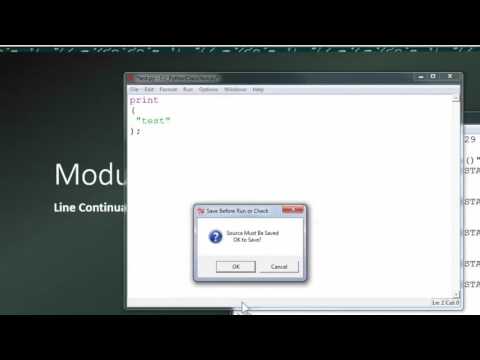
Found 5 images related to syntaxerror: unexpected character after line continuation character theme
.webp)


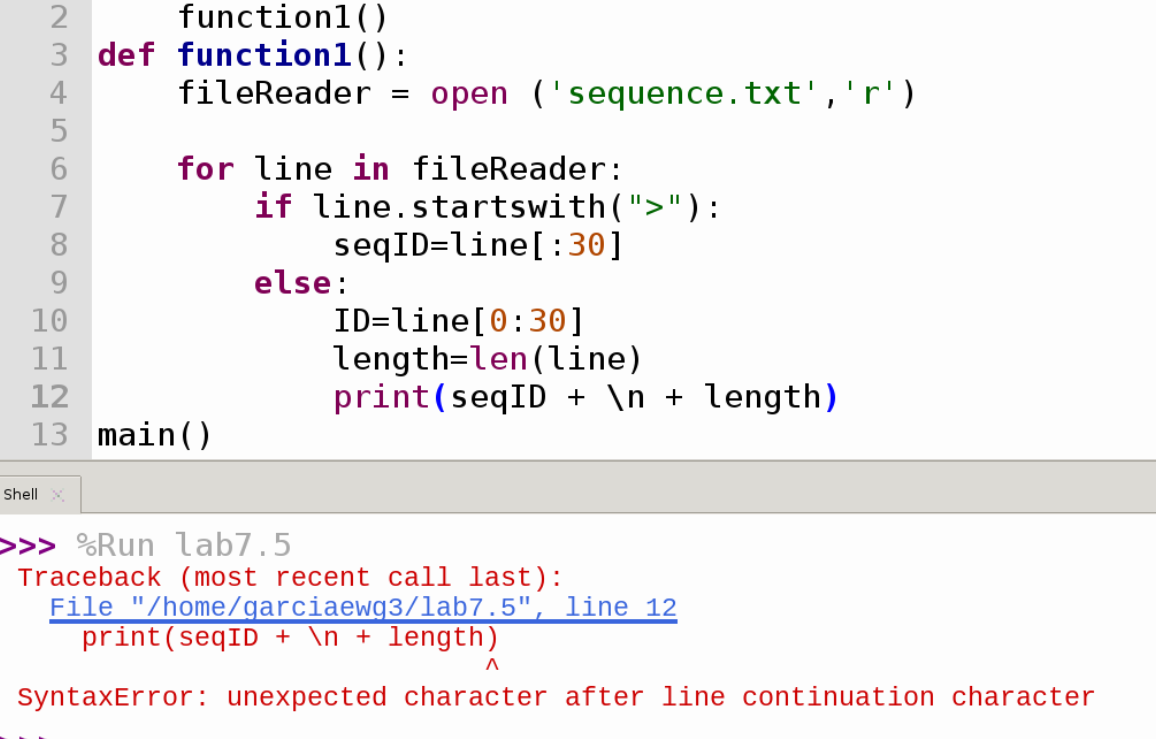
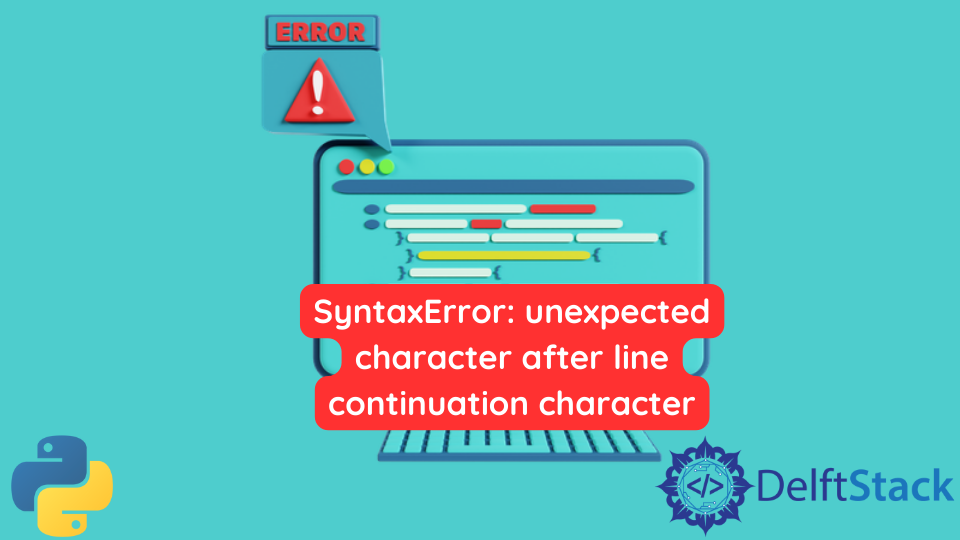




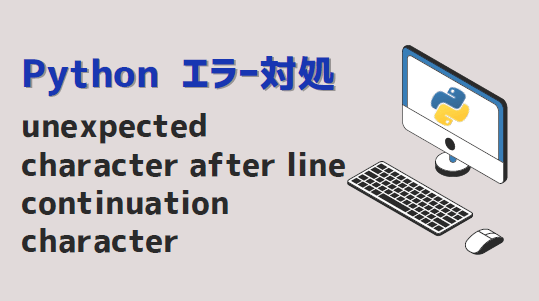















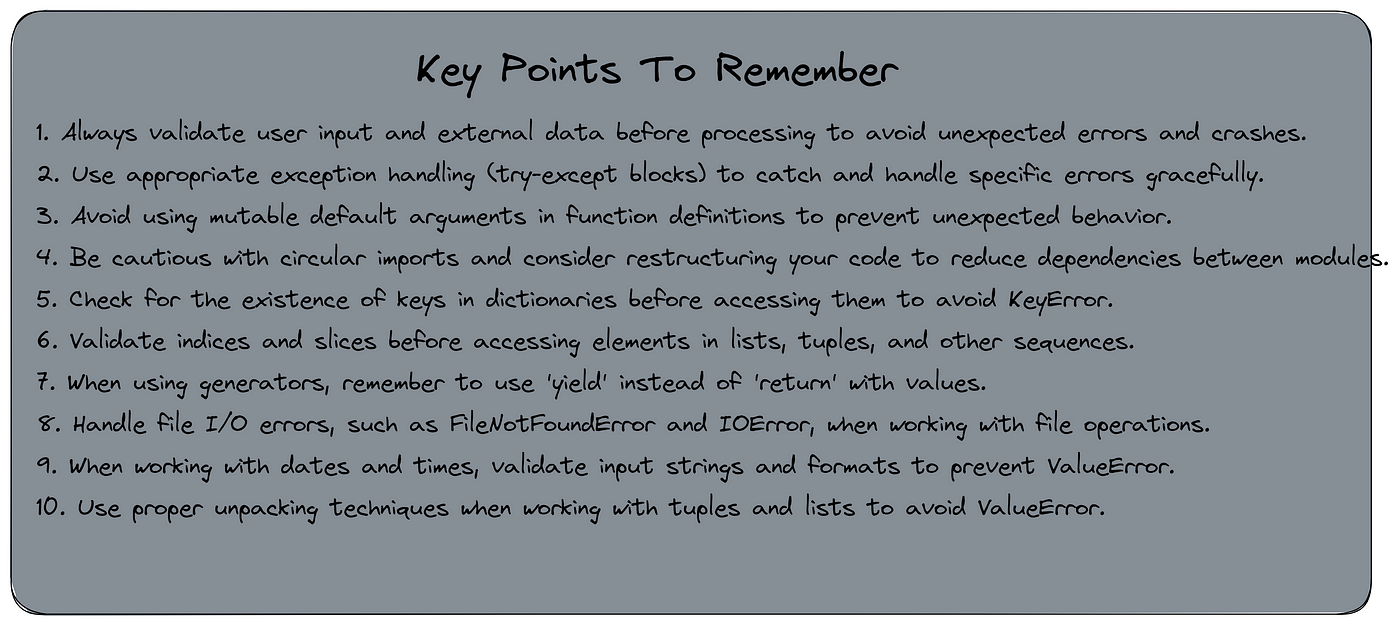









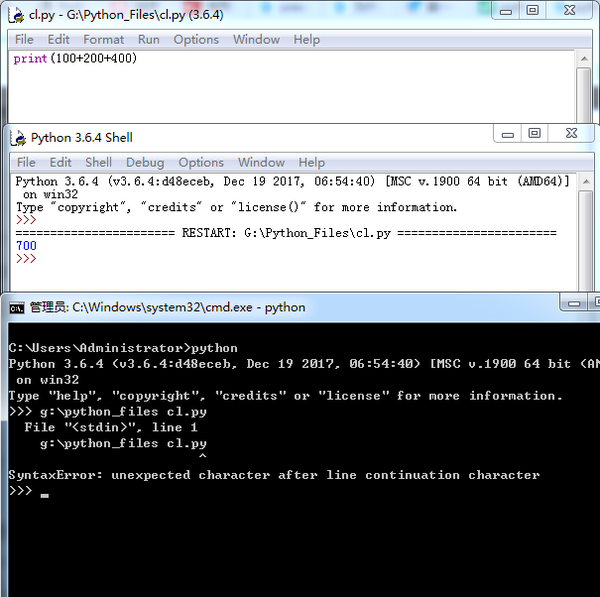







![Solved] Unexpected character (at character) Error in Flutter Solved] Unexpected Character (At Character) Error In Flutter](https://www.fluttercampus.com/img/uploads/web/2021/12/31857b449c407203749ae32dd0e7d64a.webp)
Article link: syntaxerror: unexpected character after line continuation character.
Learn more about the topic syntaxerror: unexpected character after line continuation character.
- [Fixed] SyntaxError: Unexpected Character After Line …
- syntaxerror: “unexpected character after line continuation …
- Python SyntaxError: unexpected character after line
- SyntaxError: unexpected character after line … – Yawin Tutor
- Python SyntaxError: unexpected character after line
- Python Line Continuation – MindMajix Community
- Write a long string on multiple lines in Python – nkmk note
- 9 Examples of Unexpected Character After Line Continuation …
- unexpected character after line continuation character in Python
- Why dose have an unexpected character after line …
- Syntaxerror: unexpected character after … – Itsourcecode.com
- Error [SyntaxError: unexpected character after line … – Odoo
- “SyntaxError: unexpected character after line continuation …
See more: nhanvietluanvan.com/luat-hoc